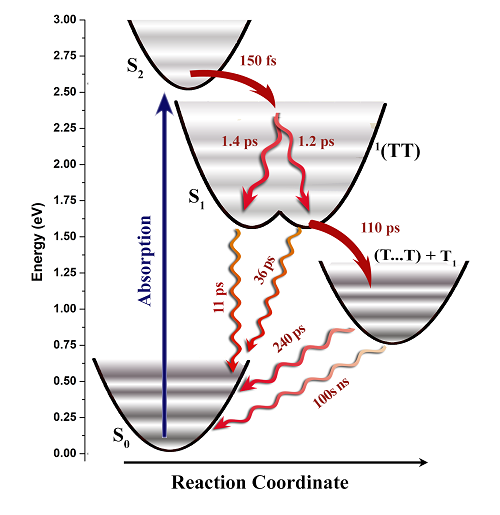The bright colors of most flowers and fruits come from carotenoids accumulated in chromoplasts (organelles observed in the cells of plant organs colored from yellow to orange, such as the cells of flower petals). These organelles are derived from chloroplasts (the site of photosynthesis) and are rich in non-chlorophyll pigments, such as xanthophylls and carotenes. The color change during ripening of tomatoes and peppers results from a transformation of chloroplasts into chromoplasts in the pericarp cells of the fruit. The chromoplasts apparently have no metabolic role. We speak of coevolution between the plant and the insect: the color of the plant due to the chromoplasts attracts the insect which feeds on its nectar and "in return" pollinates the plant.
Carotenoids are plant pigments responsible for the red, orange and yellow colors of fruits, vegetables, flowers and algae. They play an important role in the harvesting of photons during photosynthesis and ensure an efficient photoprotection of the photosynthetic apparatus. They show a strong electronic absorption making them go from a fundamental state S0 to an excited state S2 (the transition to the first excited state is forbidden at one photon). After photoexcitation, isolated carotenoids quickly return to the fundamental state in a few picoseconds.
In mature chromoplasts, carotenoids are sequestered as crystalline structures (crystalloids), granules or stromal plastoglobules. Although chromoplasts are not expected to exhibit specific functional photoactivity, SB2SM researchers recently found that lycopene (carotene family) crystalloids in tomato chromoplasts do indeed exhibit photophysics not observed in isolated carotenoids: self-associated lycopene dissipates excitation energy in a process called "singlet fission," tentatively proposed to be photoprotective.
In this work, the researchers studied the photochemistry of lutein and violaxanthin, two naturally occurring carotenoids, in the chromoplasts of the daffodil "Narcissus pseudonarcissus L." to determine whether singlet fission was unique to lycopene in tomato crystalloids, or whether it was a more general property of chromoplasts. Daffodil chromoplasts accumulate these 2 carotenoids in a concentric membrane system, forming condensed structures, the plastids, in which the carotenoids are close together. Time-resolved electron spectroscopy and vibrational spectroscopy (Raman spectroscopy) experiments unambiguously reveal that the singlet fission process does occur in lutein and violaxanthin aggregates. They also decipher in unprecedented detail this process by measuring all the energy states of the intermediate species (figure).

Model describing singlet fission in carotenoid aggregates: energy pathways
in aggregated lutein and violaxanthin after photon absorption.
Quaranta et al, Phys.Chem.Chem.Phys. 2021,23,4768
The researchers thus offer for the first time a complete description of the carotenoid singlet fission pathway in a flower, a way that was previously unknown due to the intrinsic disorder of carotenoid aggregates. The description of this natural process is important for understanding the role of carotenoid aggregates in the chromoplast, but it may also open up new ways to improve the solar efficiency of photovoltaic cells by increasing their quantum yield.
Contacts : Manuel J. Llansola-Portoles (manuel.llansola@cea.fr ; manuel.llansola@i2bc.paris-saclay.fr) ; Bruno Robert (bruno.robert@cea.fr)
Singlet fission
Carotenoids are able to rapidly dissipate the excitation energy generated by single photon absorption via an in vivo singlet fission process in fruit and flower chromoplasts, based on a spin coupling mechanism unique to molecular photophysics: during singlet fission, a single singlet excited state splits into two triplet excited states, and this phenomenon achieves a theoretical photon-to-charge conversion efficiency of 200%.